Last Updated on May 12, 2021 by Rupesh Patil
No matter what the climate is outside, it’s important for your refrigerator to be perfectly cool as its constantly at work keeping your food cold and safe to eat. But to keep your refrigerator running efficiently, it’s important that you maintain it well.
This will not just help keep your food fresh but will also help you save money on your electricity bills and save you from unexpected repair costs.
Subscribe to Onsitego
Get the latest technology news, reviews, and opinions on tech products right into your inbox
Here are some tips to follow to keep your refrigerator fully functional and running efficiently…
Check The Temperature
The ideal temperature for a refrigerator is between 33 to 40°F and 0°F for the freezer. If you think setting the refrigerator to the coldest setting can make your food last longer, you are wrong! Keeping the temperature higher than 40°F is a bad idea because it can leave your food spoilt.
The higher the temperature, the longer the compressor runs. This can not only add on to your electricity bill but can also reduce the lifespan of the compressor.
Did you know that the coldest part is at the back and the bottom inside the refrigerator?
The back because that’s where the cooling element is and the bottom because that’s where warm air rises.
So the next time you notice that any food item is turning frosty, move it away from the back of the fridge.
Get the Condenser Coil Checked Once a Year
The refrigerator’s condenser coil releases heat, making the compressor run for longer hours. When dust and dirt are caught up around the condenser coils, the system overheats and the heat does not properly flow out of the coils due to dirt. This heat stays inside the refrigerator and reduces the cooling. In fact, cleaning of the coils is needed more often if you have pets that shed.
If you notice that the fridge is not cooling as it used to before, call an expert and get the condenser coil checked.
Avoid Placing The Refrigerator Too Close To The Wall
Whether your fridge is placed in the kitchen or the dining space, ensure that the fridge is placed an inch away from the wall, so that air can circulate behind it.
This helps disperse the heat that your fridge creates and keeps it running efficiently. Having too little space can greatly impact on the performance and life of your fridge.
Always Keep The Food Covered
Sometimes we end up leaving left overs in the fridge uncovered. It’s always good to store food in air tight containers because if the food is uncovered, the moisture in the food is released into the air and the refrigerator is forced to work harder to keep the food dry.
One of the biggest mistakes most of us make is, we stuff the fridge more than necessary.
When food blocks the flow of air, it makes the fridge work harder and leaves certain areas of the fridge warmer than others.
In fact, leftovers and drinks like wine, etc can be placed on the top shelves, as they are used more often than some other items. The upper shelves also tend to have the most consistent temperature. This is good for preventing food items that easily spoil. If you have containers of leftovers, don’t put them straight into the fridge while they’re still hot.
This can raise the fridge’s temperature, making the compressor work harder to cool the fridge down. If you let your food cool to room temperature before putting it in the refrigerator, you will give your fridge some relief by taking some of the strain off it.
Close The Refrigerator Door Properly
Every time you open the fridge, ensure that you close it properly to avoid cool air from being thrown out. Leaving the refrigerator door open makes the unit’s compressor run hotter air and takes longer to cool. Plus, it burns more electricity.
Replace The Door Gasket If Required
If you notice that your refrigerator door doesn’t shut tightly, it’s time to replace the gasket. It may seem like a small thing but that little bit of rubber around the fridge door frame is important to help your fridge run efficiently.
The door gasket can get dirty or worn out over time. You could try using some warm water with a mild soap on a sponge or old toothbrush to gently scrub any dirt off the door seal. If the rubber door seal still seems loose or looks twisted, it needs to be replaced immediately.
Check The Frost Accumulation
If you do not regularly defrost your refrigerator and freezer, it may be difficult for the appliance to maintain cooler temperatures.
To maintain the efficiency of a manual-defrost freezer, it should be defrosted every time it develops a quarter-inch of ice build-up on the interior walls. This frost buildup can cause waste of energy and increase your monthly bills.
A frost-free freezer on the other hand, is equipped with a heating coil and temperature sensor to prevent the accumulation of frost on the insides of the refrigerator. However, if it’s not frost-free, you may find that the frost keeps accumulating.
The ice makes it difficult for your freezer to work efficiently. In fact, if you live in a hot, humid climate, it is necessary that you regularly defrost your manual or automatic refrigerator.

We Recommend A Frost-Free Double Door
Double door fridges have auto defrost and are the best to have for bigger families. They have separate compartments for the freezer and fresh food. These are usually frost free models and circulate a constant flow of air to prevent any ice build-up.
The vegetable tray is contained inside the fridge, and since these are relatively bigger than single door fridges, they are good for families of four or above.
They have more shelf space than single door fridges, and it is also adjustable shelving, so you can tweak the space required to hold your containers. The freezer can be at the top or at the bottom. Sizes of this kind of fridge vary from 200-litres to 500-litres, and prices are mid-range, but can be higher on a bigger size.
Top mount freezers are still the most common type in double-door fridges, and, as the name suggests, in this case, the freezer comes on top of the fresh foods compartment.
These are more energy efficient than any other type, because the compressor is located very far from the freezer, which means there is no source of heat near the unit. Since there is no heat, the freezer does not have to work harder to keep cool. But an obvious disadvantage is, because the fresh food compartment is lower, you have to bend or crouch to access that part.
Since the fresh foods part is the most used part of a fridge, people with back issues may have difficulty operating the fridge.
Bottom Freezer is a newer design, and here the freezer unit is at the bottom with the fresh foods part on top. They are best for elderly people and for those with difficulty bending because most things are easy to access at the top.
However, bottom freezer fridges consume more power as the compressor is located very close to the freezer and a source of heat this close means the freezer has to work more to keep cool. Besides, if you don’t use a lot of meat/fish etc, it might be useful to have fresh foods and vegetables at an easier-to-access level.
Star Rating & Energy Consumption
The Energy Efficiency Rating (EER) tells you how energy efficient your fridge is. A higher star rating means more efficiency. Always look for a blue and green coloured Bureau of Energy Efficiency (BEE) logo to ensure the authenticity of the EER rating.
If you are concerned about your electricity bills, go for a fridge with a higher EER (because they cost less to operate), even if it seems a little more expensive at the beginning. Find out before you buy how many units of electricity a fridge uses in a year (measured in kWh).
But please remember that how much electricity your fridge really consumes will also depend on your usage patterns. For example, keeping the door open for more than necessary will use more power as the fridge overworks to maintain the temperature inside.
Also, if you fill the fridge to capacity, it will need more power to circulate cold air inside, and therefore, it is recommended to keep the fridge 20% empty at all times for optimal air circulation.
A digital or inverter compressor also makes a fridge more energy efficient so do check for the compressor type when buying a refrigerator.
Your Cleaning Method
The more the compartments in the fridge, the more cleaning time it would require. Also, check the shelf material. A wire shelf will require more maneuvering than a solid tempered glass shelf. And it is not just the interiors.
The exterior should be easy to clean too. If you are particular about keeping your appliances spotless, avoid buying a stainless steel exterior because these tend to smudge easily. Opt for a colored exterior or a smudge-free finish instead.

Things To Consider When Buying A Fridge
When buying a fridge, there are a number of things that you can skip, but there are also some features that you most certainly want:
- Adjustable shelves are a huge plus point. This means that you can tweak the space inside to hold larger containers by adjusting the position of the shelves. Also look for shelves with a spill-proof feature so in case you drop something on it, it does not spill to the rest of the fridge.
- Deep door pockets and shelves help you store more and larger containers.
- A high energy rating will help you save electricity, and therefore, money, over time.
- A cool pad is a good feature to have too. This is a gel-filled pad which will retain the temperature inside the fridge even in the event of long power-cuts, thereby keeping your food fresh for longer.
- Buy a voltage stabiliser if the power situation in your area is not very stable. Most fridges today come with in-built surge protection, but they might also cost more. If you don’t want to spend extra on that, a stabiliser will be a huge help.
- An Extended Warranty plan that will take care of any servicing/repairs once the manufacturer’s warranty ends.
These steps can increase the efficiency of your refrigerator as well as help you reduce your energy consumption and save money on your electric bill each month.

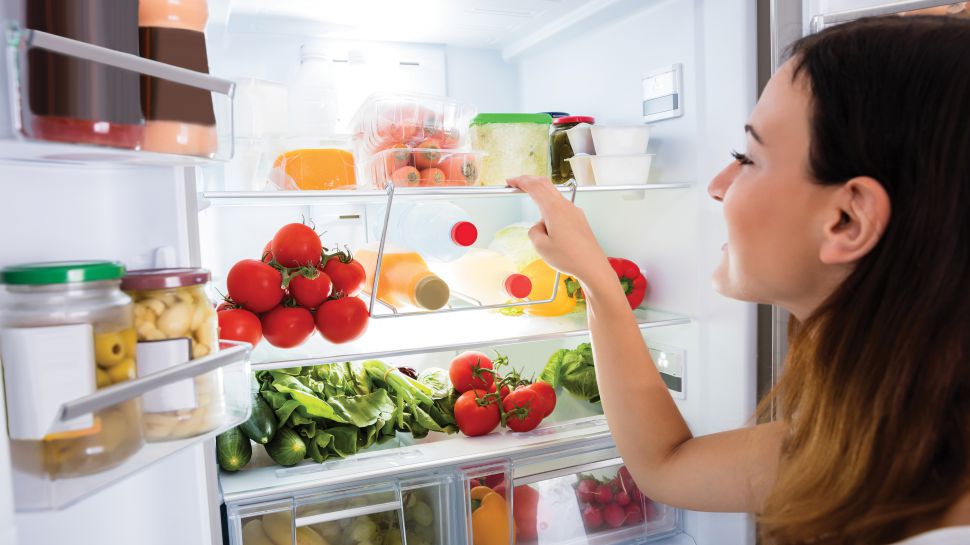


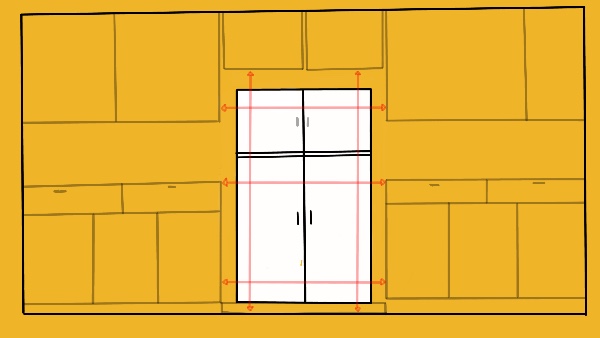

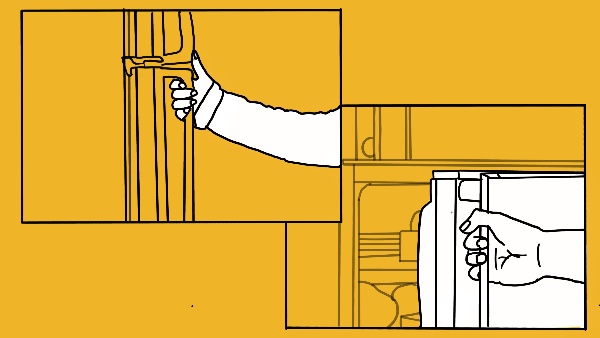

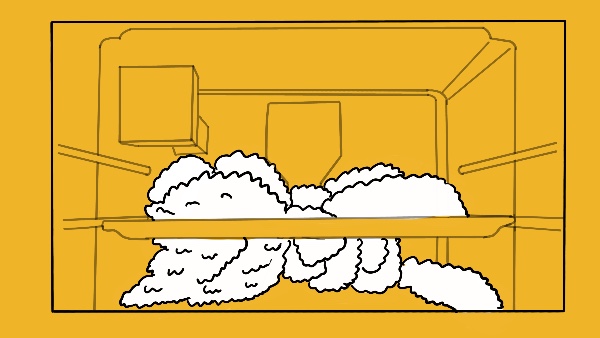

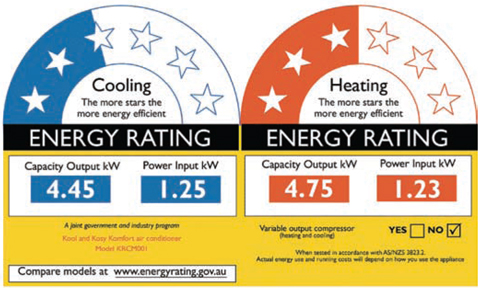
Discussion about this post